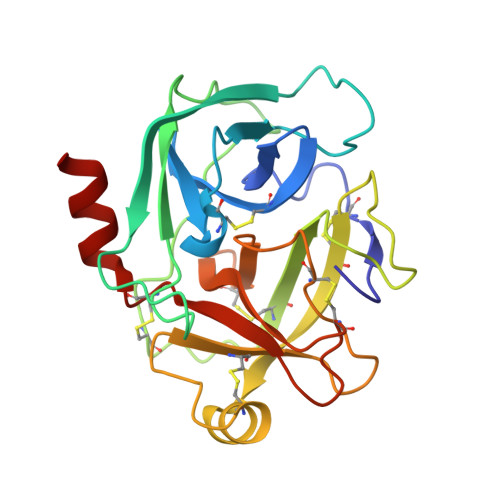Design and development of a series of borocycles as selective, covalent kallikrein 5 inhibitors.
Walker, A.L., Denis, A., Bingham, R.P., Boulliot, A., Edgar, E.V., Ferrie, A., Holmes, D.S., Laroze, A., Liddle, J., Fouchet, M.H., Moquette, A., Nassau, P., Pearce, A.C., Polyakova, O., Smith, K.J., Thomas, P., Thorpe, J.H., Trottet, L., Wang, Y., Hovnanian, A.(2019) Bioorg Med Chem Lett 29: 126675-126675
- PubMed: 31521475
- DOI: https://doi.org/10.1016/j.bmcl.2019.126675
- Primary Citation of Related Structures:
6SKB, 6SKC, 6SKD - PubMed Abstract:
The connection between Netherton syndrome and overactivation of epidermal/dermal proteases, particularly Kallikrein 5 (KLK5) has been well established and it is expected that a KLK5 inhibitor would improve the dermal barrier and also reduce the pain and itch that afflict Netherton syndrome patients. One of the challenges of covalent protease inhibitors has been achieving selectivity over closely related targets. In this paper we describe the use of structural insight to design and develop a selective and highly potent reversibly covalent KLK5 inhibitor from an initial weakly binding fragment.
Organizational Affiliation:
GlaxoSmithKline R&D, Medicines Research Centre, Gunnels Wood Road, Stevenage, Hertfordshire SG1 2NY, UK.

















